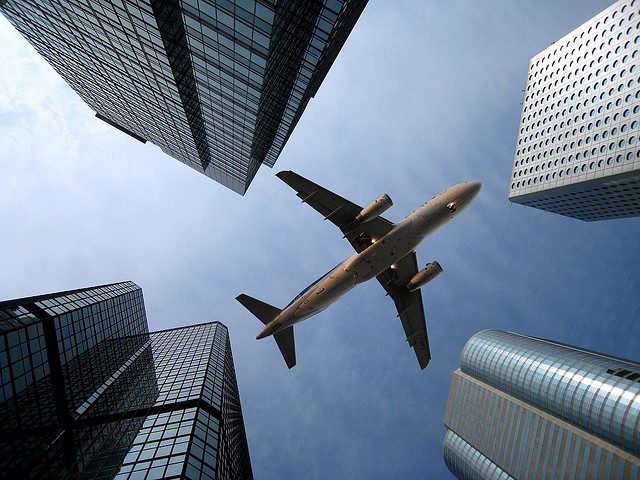Dealing with Aerophobia

| I was on a flight from Las Vegas, Nevada, to Salt Lake City, Utah. The plane smoothly sailed across the skies until it hit a rough patch of turbulence. The lights flickered and the plane dropped several feet. My stomach felt like a cheerleader doing cartwheels at a football game. I clenched my fingers around the armrests and sat upright for the rest of the flight, praying that we would make it. Twenty minutes later, everyone clapped as the plane safely touched the ground. |
Now, every time I feel turbulence on a flight, I immediately latch onto my husband. As he tries to utter words of comfort, I demand, “Don’t talk! Just hold me. Hold me!”
If you find flying nerve-racking, you’re not alone. In his New York Times article, “For Fear of Flying: Therapy Takes to the Skies,” Tim Murphy emphasizes that about 40 percent of all people have some level of fear about flying. People are scared of flying for various reasons: fear of turbulence, tight spaces, sickness, lack of control, and so on. What can be done to relieve stress while flying?
Katie Ronshausen, 30, has been a flight attendant for the past ten years, and she is also a certified personal trainer with the American Council on Exercise (ACE). Consider these five tips from Katie on how to survive the flight.
Know where to sit. If you fear turbulence troubles, Katie suggests that you sit closer to the front of the plane. This is the plane’s center of gravity, which is the heaviest and most stable part of the plane. “A good analogy would be putting a pencil on your finger,” she says. “The balance of gravity will be closer to the eraser because that’s the heaviest end of the pencil.” Clear air turbulence is the irregular movement of unseen air masses and is caused by cold and hot air clashing at varying speeds and directions. These irregular movements cause the bumps that you feel on the plane. “Oftentimes, flight attendants at the front of the plane don’t know how bad the turbulence really is . . . and the pilots don’t either,” Katie says.
Trust the technology. Planes are built to bend and flex with the air currents. They also have to be inspected regularly in order to be up in the air. Katie believes that people are a lot safer traveling in an airplane than driving in their car. “When you’re in a car, you’re by yourself,” she says. “In the airplane, air dispatchers know what altitude you’re flying at, they know what kind of turbulence you’re going through, and they know who’s coming at you and who’s above you.”
Stretch your neck and shoulder muscles. Many people have tension in their upper shoulders and neck muscles because of stress. “A good stretch to do while seated is a side lateral pull,” Katie suggests. “Sit up straight with both feet planted on the floor. Raise your left arm above the head, placing your left hand over your right ear. Using your hand, gently tilt the head to the left, keeping your right shoulder pulling down in the opposite direction. You should feel the stretch immediately in the neck along the ear all the way down into the shoulder. Repeat on the other side.”
Stay hydrated. Drink a lot of water. Your muscles function better when you are hydrated. “The more hydrated you are, the more flexible you become,” says Katie. “The more flexible you are, the more stress you can relieve. You’re taking care of your overall health as well.” Most of all, avoid alcohol and caffeine. “They can actually make the situation worse if you’re already stressed,” Katie explains.
Take deep breathes. “Sit comfortably and as still as possible and let distractions fade away in the background,” Katie instructs. “Close your eyes and think only about the breaths going in and out. Allow as much air in as possible through the nose, and exhale, taking at least twice as long to let the air out of the lungs. Exhale slowly through the nose. Continue for as long as it takes for the body to release tension and for the mind to slow down and refocus.”
—Keri Shurtliff


Passing this on to my sister!